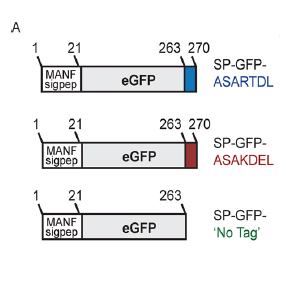Featured Paper of the Month – January 2015
Published in Molecular Biology of the Cell by Henderson, Mark J; Wires, Emily S; Trychta, Kathleen A; Richie, Christopher T; Harvey, Brandon K
Summary
Endoplasmic reticulum (ER) calcium homeostasis is disrupted in diverse pathologies, including neurodegeneration, cardiovascular diseases, and diabetes. Temporally defining calcium dysregulation during disease progression, however, has been challenging. Here we describe secreted ER calcium-monitoring proteins (SERCaMPs), which allow for longitudinal monitoring of ER calcium homeostasis. We identified a carboxy-terminal modification that is sufficient to confer release of a protein specifically in response to ER calcium depletion. A Gaussia luciferase (GLuc)-based SERCaMP provides a simple and sensitive method to monitor ER calcium homeostasis in vitro or in vivo by analyzing culture medium or blood. GLuc-SERCaMPs revealed ER calcium depletion in rat primary neurons exposed to various ER stressors. In vivo, ER calcium disruption in rat liver was monitored over several days by repeated sampling of blood. Our results suggest that SERCaMPs will have broad applications for the long-term monitoring of ER calcium homeostasis and the development of therapeutic approaches to counteract ER calcium dysregulation.
SERCaMP: a carboxy-terminal protein modification that enables monitoring of ER calcium homeostasis. Journal Article
In: Mol Biol Cell, vol. 25, no. 18, pp. 2828–2839, 2014, ISSN: 1939-4586 (Electronic); 1059-1524 (Linking).

